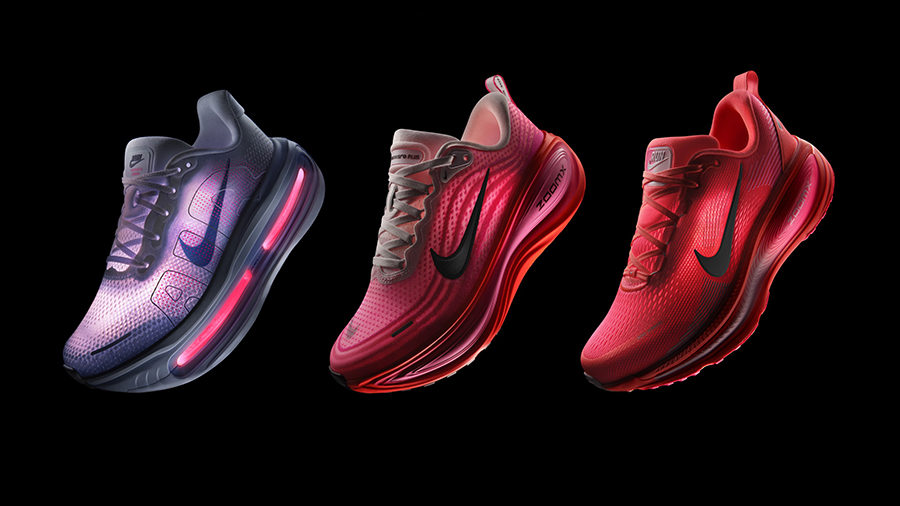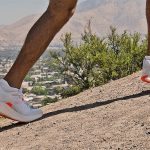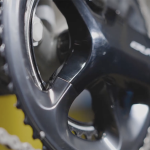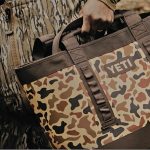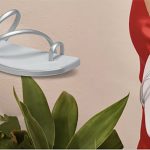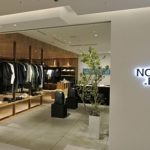Nike, Inc. continues to face headwinds in its turnaround efforts, including an estimated $1 billion hit from tariffs but the company’s first-quarter guidance still came in better than expected. Nike management told analysts on its Q4 conference call that its steps to reengage wholesale partners are paying off, with holiday bookings up.
Fourth-quarter sales and earnings were sharply below year-ago levels due, in large part, to the company’s efforts to clear inventories of classic footwear franchises (The Dunk, Air Force One, Jordan 1) after it had become too reliant on selling retro footwear. Nike’s sales and margins have also taken a hit by moves it has made to reduce off-price sales across DTC channels.
Finally, Nike’s business in China remains stagnant due to broader macroeconomic challenges in the region. However, Elliott Hill, Nike’s CEO and president since last October, noted on an analyst call that Nike’s “Win Now“ turnaround strategy is making progress, particularly with the brand’s move to refocus on sports and bring innovation to its performance product. A bright spot was the increase in sales of running shoes in the high-single- digits in the quarter, supported by the strong response to the Vomero 18.
Hill said, “We’re finding a better balance with our portfolio of sport performance, and new dimensions of sportswear are expected to offset the declines in our classic franchise with wholesale partners.“
Nike also reported that its order book had improved sequentially, with holiday orders up as the renewed focus on sports and reduced promotions in the marketplace have helped the company to “gain the confidence“ of existing wholesale partners. Nike is also finding new distribution partners and renewing existing ones, including Amazon, Urban Outfitters, and fashion boutiques like Aritzia, in the quarter.
“The Nike integrated marketplace is beginning to take shape,“ said Hill. “Along with Nike Direct, these partners will play an important role in serving a wider range of consumers. This is Nike at its best, leveraging our portfolio of brands and sport-led product offerings across multiple channels and up-and-down price points.”
Investors were also encouraged by Nike’s first-quarter outlook, which projected a mid-single-digit sales gain, representing a healthy sequential improvement compared to the 12 percent decline seen in the fourth quarter.
Hill cautioned on the call that the company’s fiscal fourth-quarter and full-year results “are not up to the Nike standard. But, as we said 90 days ago, the work we’re doing to reposition the business through our ‘Win Now’ actions is having an impact. From here, we expect our business results to improve. It’s time to turn the page.”
Fiscal Q4 Results Slightly Top Analyst Targets
In the fourth quarter, May 31, sales fell 12.0 percent to $11.1 billion and declined 11 percent on a currency-neutral basis. Results topped Wall Street’s consensus target of $10.7 billion.
Net earnings tumbled 85.9 percent to $211 million, or 14 cents a share, although they came out ahead of analysts’ consensus target of 12 cents.
Matt Friend, EVP and CFO, noted on the call that Nike had previously said the fourth quarter would represent “the largest financial impact“ from Nike’s “Win Now“ restructuring program. Friend said, “We expect the headwinds to revenue and gross margin to begin to moderate from here.”
Revenues for the Nike Brand in the quarter were $10.8 billion, down 11 percent on both a reported and currency-neutral basis. Revenues for Converse totaled $357 million, down 26 percent on a reported and currency-neutral basis, due to declines across all territories.
Nike Direct was down 14 percent on a reported and currency-neutral basis to $4.4 billion due to a 26 percent drop in Nike Brand Digital, partially offset by a 2 percent increase in Nike-owned stores. Wholesale revenues were $6.4 billion, down 9 percent on a reported and currency-neutral basis.
Gross margins declined 440 basis points to 40.3 percent on a reported basis due to higher wholesale discounts, increased discounts in its Nike Factory Stores, supply chain cost deleverage, and channel mix headwinds.
SG&A expense increased 1 percent on a reported basis as a 15 percent hike in marketing spend, partially offset by a 3 percent decline in operating overhead. As a percent of sales, SG&A expense increased to 37.4 percent from 32.4 percent.
EBITDA in the quarter plunged 82.3 percent to $296 million.
For the fiscal year, sales were down 9.8 percent to $46.3 billion and off 9 percent on a currency-neutral basis. Earnings were down 43.5 percent to $3.2 billion, or $2.16 a share.
Inventory was flat versus the prior year and down 1 percent versus the prior quarter. Friend said, “Inventory remains elevated, but we are making progress. We closed the year in line with our plans and remain on track to exit the first half of fiscal 2026 in a healthy and clean position.”
North America Making Progress with Inventory Rebalancing
In North America, Q4 revenue declined 11 percent to $4.7 billion. Nike Direct declined 14 percent, while Nike Digital was down 25 percent and Nike stores were up 3 percent. Wholesale declined 8 percent. EBIT dropped 29 percent on a reported basis to $1.04 billion.
“North America made meaningful progress cleaning up the marketplace and repositioning Nike Digital as a full-price model,“ said Friend. “Momentum is building in wholesale with newness in the product portfolio.”
The Sportswear category declined in North America during the quarter, driven by a nearly 40 percent reduction in sales of its classic footwear franchises. Performance also declined, although there was a strong sell-through for new products in the running and training categories.
North America inventory actions continued with higher sales-related returns and higher discounts to liquidate aged inventory. Inventory dollars and units increased, partially due to investments in support of new distribution, unfavorable shipment timing and new tariffs. NA Digital saw “meaningful improvement in markdown rates as well as a higher share of demand at full price in the quarter,“ Friend said.
EMEA Shows Most Progress Among Regions
In the EMEA, Q4 revenue declined 10 percent to $3 billion. Nike Direct dropped 19 percent, while Nike Digital declined 36 percent and Nike stores increased 5 percent. Wholesale declined 4 percent. EBIT was down 41 percent on a reported basis to $472 million.
Friend said EMEA is furthest along in cleaning up the marketplace and repositioning Nike Digital within an integrated marketplace. Running and training drove growth, offset by declines in the sportswear sector. Sportswear increased overall in wholesale in Q4, and women’s sportswear footwear returned to growth. Inventories in EMEA ended the quarter “slightly ahead“ of targets, with inventory dollars remaining flat and units down mid-single digits compared to the prior year. Nike Digital delivered improvements in markdown rates as well as a double-digit increase in the share of demand at full price.
Greater China’s Q4 Revenues Tumble 20 Percent
In Greater China, Q4 revenue declined 20 percent to $1.48 billion, primarily in line with the company’s plan. Nike Direct declined 15 percent, with Nike Digital down 31 percent and Nike stores down 6 percent. Wholesale declined 24 percent. EBIT fell 45 percent on a reported basis to $304 million.
“Greater China executed a deeper reset of inventory relative to our other geographies with higher sales-related reserves, higher discounts and supply reductions,“ said Friend. “Traffic remains challenged, and our priority is to refresh local monobrand store concepts and elevate brand presentation through sport.”
On the product side, running returned to growth in the quarter, offset by declines in Sportswear and Jordan. Inventory was down 11 percent versus the prior year, driven by aggressive actions to clean and reset the marketplace. Digital remains” highly promotional“ across the market. Said Friend, “Our priority in Greater China is to refresh the monobrand marketplace, creating greater brand distinction through sport-led consumer concepts and full-price growth. We have launched a pilot across select doors. However, our actions to energize and reset this marketplace will take time.”
APLA Continues Seeing Elevated Inventory Levels
In APLA, Q4 revenue declined 3 percent to $1.58 billion. Nike Direct declined 1 percent, with Nike Digital down 6 percent and Nike stores up 4 percent. Wholesale declined 5 percent. EBIT declined 33 percent on a reported basis to $319 million. Said Friend, “APLA delivered mixed results across countries with further work required to clean up inventory. The team has also taken initial steps to reposition Nike Digital.”
Among categories, Sportswear and Jordan declined, but Performance returned to growth, driven by running and training. Said Friend, “Our teams took aggressive actions to clean up the marketplace and further tighten the buys on Nike Digital; however, inventory remains elevated.”
Tariff Update
Nike estimates that it will absorb a gross incremental cost increase of approximately $1 billion due to the existing tariffs, resulting in a roughly 75-basis-point hit to gross margin for the current fiscal year, with a greater impact in the first half.
Friend said the tariffs represent a “new and meaningful cost headwind,“ but the company has taken actions to mitigate the impact, including reallocating sourcing to different regions. Currently, China accounts for approximately 16 percent of Nike’s footwear imports to the U.S., a figure the company expects to decline to the high single-digit range by the end of FY26.
Nike is also partnering with factories and retailers “to minimize the overall impact to the consumer“ while implementing a “surgical price increase“ beginning in Fall 2025. Nike didn’t elaborate on the expected price increases.
Finally, Nike is evaluating corporate cost reduction “as appropriate.“ In February 2024, Nike announced a $2 billion cost-cutting and restructuring plan, which resulted in 740 layoffs at Nike’s world headquarters. Recent reports indicate that Nike is laying off some employees who work in technology-focused job positions.
Friend added, “However, our highest priority right now continues to be reigniting brand momentum through sport and stabilizing our business.”
Annual Sales Breakout
With the release of its fourth-quarter results, Nike, as usual, provided annual sales figures for the Nike Brand across genders and kids as well as for the Jordan Brand.
Men’s sales for the Nike Brand for FY25 were $23.2 billion, down 6.3 percent on a reported basis and 6 percent on a currency-neutral basis. Women’s sales for the Nike Brand reached $9.7 billion, declining 6.2 percent on a reported basis and 5 percent on a currency-neutral basis. Kids sales for the Nike brand were down 5.4 percent (5 percent currency-neutral) to $5.7 billion. Jordan Brand revenues totaled $7.27 billion, down 16.4 percent, and were off 16 percent on a currency-neutral basis.
CEO Commentary
Elliott Hill, in his commentary on the analyst call, highlighted the progress Nike has made with its “Win Now“ strategy, focusing on culture, product, marketing, and marketplace, while noting that Nike has flattened its leadership structure, including changes to 11 of his 15 direct reports. As part of the “Win Now“ efforts, Nike accelerated innovations and increased marketing spending to stimulate demand.
“We pulled the lever we could pull the fastest, investing heavily in big sports moments and key product launches to win back our brand voice,“ said Hill. “That energy has ignited Nike Performance products with consumers, which is helping us to better balance our portfolio. Reclaiming our voice in sports has turned out to be the jump start we needed for our team culture, too.”
Hill said he is personally meeting with wholesale partners “to reaffirm that we’re prioritizing and investing in their businesses,” with plans to hire retail marketing, visual merchandising, and account management employees to better support the wholesale channel.
Hill further said Nike is realigning its cross-functional teams by sport, rather than a men’s, women’s and kids’ construct in part to better compete in the marketplace. He said, “The truth is we’re in a fight in every sport we’re in, and each sport has different competitors. As we begin to align our iconic brands by sport, we’ll have a closer line of sight so we can develop targeted plans to match up against each one of them,” continued Hill.
Focusing on sport is also expected to support Nike’s channel segmentation efforts across consumer use and price points. Hill said, “Strategically, sharper marketplace segmentation in a sport offense allows us to deliver unique assortments and storytelling opportunities across different channels and partners to better serve our consumers and to help drive profitable, sustainable growth for our partners.”
On product, Hill called out the success of the Vomero 18, which, in over 90 days, has “become a $100 million-plus franchise with strong sell-through.” Other highlights include over 50 percent growth in women’s basketball in FY25, with the first signature shoe from A’ja Wilson’s Signature Collection recently selling out quickly.
In the sportswear market, the P-6000, Vomero 5, and Shox running silhouettes continue to gain momentum, while Nike expects the reintroduction of the Air Max 95 to deliver a strong launch. Hill said, “While we have a ways to go to return to a truly diversified sportswear lineup at scale, I’m pleased with the progress the team is making.”
Hill also cited apparel opportunities in training, golf and tennis by both style and performance segments while early feedback from wholesalers on Nike’s soccer line-up to support the 2026 World Cup “has been positive.“
Reflecting on geographies, Hill said, “Momentum and confidence are building in North America and EMEA,” while APLA’s progress varies by individual country.
Hill said China’s recovery will “take longer due to the unique characteristics“ of the region. “We’ve been operating in China for over four decades, and our teams know what is required to return to growth. We’re executing our plans and trending in the right direction, but a full recovery will take time,” said Hill.
Outlook Update
For the fiscal first quarter ended August 31, Nike expects revenues to be down in the mid-single digits and gross margins to decline by 350 to 425 basis points, including approximately 100 basis points negative impact due to existing tariffs. The company projects SG&A dollars to increase in the low-single digits.
Nike suspended offering full-year guidance last October in light of extensive turnaround steps expected following the appointment of Hill as CEO and did not provide a full-year outlook in its reporting of fourth-quarter results.
Friend provided some details about the year. He said Nike expects headwinds tied to its efforts to rebalance inventories for its Classic franchises — The Dunk, Air Force One, Jordan 1 — to continue through the first half of fiscal 2026, “with signals that the Air Force 1 is stabilizing while we plan for larger reductions for The Dunk.”
Inventories of classic footwear franchises were down by more than 20 percent for the year, with a decline of over 30 percent in the fourth quarter. Friend said, “We remain on track for a healthy and clean market by the end of the first half of fiscal 2026. Over the next two quarters, Nike will continue liquidating excess inventory through our value stores and select value partners. In the second half, we then expect to see a modest headwind to revenue as we lap aggressive clearance activity in the prior year.”
Nike expects digital traffic to remain down this fiscal year, as the company’s website focuses on full-price sales and reductions in classic footwear franchises.
On the positive side, Friend said Nike sees “encouraging signals“ at wholesale, with holiday orders up overall and growth in North America, EMEA and APLA partially offset by declines in Greater China.
Image courtesy Nike (shown left to right: Vomero Premium, Vomero Plus and Vomero 18)

